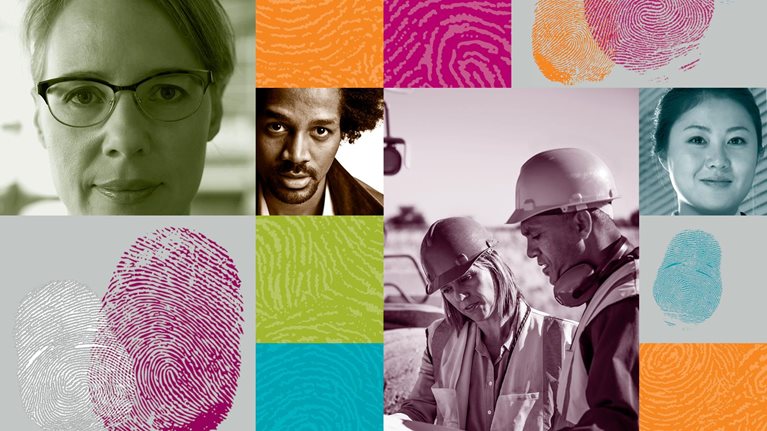COVID-19 is confronting companies around the world with a daunting degree of disruption. In the immediate term, some face devastating losses of revenue, dislocations to operations and supply chains, and challenges to liquidity and solvency. Others are coping with enormous unexpected spikes in demand. In the medium term, we can expect material and lasting shifts in customer markets, regulatory environments, and workforce deployments. Leaders and managers will need a great deal of resolve and resilience as they seek to navigate an economically and socially viable path toward a “next normal.”
The lessons from previous crises tell us there is a very real risk that inclusion and diversity (I&D) may now recede as a strategic priority for organizations.1 This may be quite unintentional: companies will focus on their most pressing basic needs—such as urgent measures to adapt to new ways of working; consolidate workforce capacity; and maintain productivity, a sense of connection, and the physical and mental health of their employees.
Yet we would argue that companies pulling back on I&D now may be placing themselves at a disadvantage: they could not only face a backlash from customers and talent now but also, down the line, fail to better position themselves for growth and renewal. Some of the qualities that characterize diverse and inclusive companies—notably innovation and resilience—will be much in need as companies recover from the crisis.2 Indeed, it could help companies to unlock the power of I&D as an enabler of business performance and organizational health and contribute to the wider effort to revive economies and safeguard social cohesion. In this article, we explore what companies can do to ensure that I&D remains a core part of their agendas during the downturn, and beyond.
The benefits of I&D are clear now—and that doesn’t change in a crisis
Our research has repeatedly shown that gender and ethnic diversity, inclusion, and performance go hand in hand. Our latest report, Diversity wins: How inclusion matters, reinforces the business case.3 Over the past five years, the likelihood that diverse companies will out-earn their industry peers has grown. So have the penalties for companies lacking diversity. Another forthcoming McKinsey report, about Latin America, highlights the strong correlation between gender diversity and positive behavior directly related to better organizational health—which, in turn, is associated with better business performance. Similarly, our previous research found that women tend to demonstrate, more often than men, five of the nine types of leadership behavior that improve organizational performance, including talent development. Women also more frequently apply three of the four types of behavior—intellectual stimulation, inspiration, and participative decision making—that most effectively address the global challenges of the future.
Diversity winners that deploy a systematic approach to inclusion and diversity and don’t fear bold action to foster inclusion and belonging are most likely to reap the rewards. Now is the time to be even bolder.
The bulk of this research on the business case for diversity was carried out during the past five years, when economic conditions have been mostly favorable. Yet the evidence from past crises shows that diversity can also play an important role in recovery. For example, several reports have shown that in the 2008–09 global financial crisis, banks with a higher share of women on their boards were more stable than their peers. This research also suggests that banks run by women might be less vulnerable in a crisis.4 And we are seeing, right now, that cities and countries with women leaders are thought to be facing the COVID-19 pandemic more successfully than those without them.5 It may be, some researchers conclude, that female leadership has a trust advantage giving women the edge in certain crisis situations.6
The challenge: Why I&D may lose momentum during the COVID-19 crisis
Progress on I&D could slow down during and after the crisis unless companies consciously focus on advancing diversity and fostering inclusion. The importance of such continuity is quite intuitive, but it was not the norm during the 2008–09 financial crisis: although gender-diversity programs were not officially deprioritized, they did not benefit from additional effort or interest, and programs targeting all employees became a higher priority among some of the companies in our sample.7 Early signs, this time around, are not encouraging. One pulse survey of I&D leaders, for example, found that 27 percent of them report that their organizations have put all or most I&D initiatives on hold because of the pandemic.8
Representation at risk. As the crisis makes jobs vulnerable, diverse talent may be most at risk. To be sure, we may see an uptick in the number of jobs and, possibly, in pay for some gendered occupations—such as healthcare providers on the front line of public service.9 But these effects are likely to be offset by job losses in the private sector, where low-skill, low-paying jobs in retailing, leisure, and hospitality may be hard hit.
Furthermore, the crisis will probably intensify existing workplace-automation trends that are already expected to take a greater toll on women and minorities. While previous research from the McKinsey Global Institute has shown that automation has a more or less equal net impact on the jobs of women and men, it will vary greatly across sectors and regions. Pervasive barriers to the development of skills and access to technology must be overcome if women and minorities are to get new job opportunities, especially in the tech sector. Avenues for economic advancement will continue to be a challenge for them. And because they typically work in medium- and lower-paid occupations, and demand for such roles is expected to shrink, they are likely to bear the brunt of the transition.
We can see this playing out already in the crisis. McKinsey research has found that 39 percent of all jobs held by black Americans—compared with 34 percent by white ones—are now threatened by reductions in hours or pay, temporary furloughs, or permanent layoffs. That is seven million jobs.
Eroding inclusion. A second key risk is that remote-working conditions may erode inclusion. Sending staff home to work, in a bid to stem the spread of COVID-19, risks reinforcing existing exclusive behavior and biases and undermining inclusive workplace cultures. McKinsey research analyzing the lessons of remote working in China—an early mover because it was at the vanguard of efforts to contain the spread of COVID-19—found that teams or whole business units working remotely can quickly become confused and lose clarity. Isolation leads to uncertainty about whom to talk with on specific issues and how and when to approach colleagues, leading to hold-ups and delays. In such a climate, there is a risk of amplifying noninclusive dynamics.
Remote-working norms, particularly videoconferencing, could make it difficult for some personnel, such as LGBTQ+ employees, to avoid publicly sharing aspects of their home lives they might not be comfortable revealing to all of their colleagues. Working from home also may put women and minorities at a disadvantage, given challenges such as broadband access, the availability (or lack) of home-office space, and childcare and home-schooling duties.10
The chance: Leveraging I&D in the crisis
These challenges, if unaddressed, could undermine corporate responses to the COVID-19 crisis. Leaders and organizations will need enhanced problem-solving skills and vision to address dislocations in businesses, industries, and regulatory environments. Strategic agility—the ability to spot and seize game changers—is likely to be a mission-critical trait. It is also likely to be stronger in organizations that can draw on the full spectrum of diverse talent available to them.
Our research and the research of others suggest that when companies invest in diversity and inclusion, they are in a better position to create more adaptive, effective teams and more likely to recognize diversity as a competitive advantage.11 Meanwhile, other companies might struggle. Their responses to I&D during the COVID-19 crisis could mirror the broader stances toward I&D described in our report Diversity wins, where three broad categories of approaches emerged.
- Diversity winners and fast movers. One-third of the companies in our data set have made significant I&D gains over the past five years and are increasingly pulling ahead of their industry peers in financial performance. Our experience with companies in this group suggests that many of them will view their existing strengths in I&D as a way to bounce back more quickly from the crisis while they actively seek to boost representation and inclusion.
- Moderate movers and resting on laurels. A middle group of companies have made only modest I&D gains in the past five years. It’s easy to imagine their continuing to tread water during the crisis, perhaps seeking to protect their gains but doing little new to build on or increase them.
- Laggards. Companies in this broadest group have progressed little, remained static, or regressed in their gender and ethnic representation in the past five years. With no momentum, most could well deprioritize I&D efforts during the COVID-19 crisis.
The crisis, in other words, will interact with existing I&D trends. Further separation between diversity leaders and laggards is possible, and companies in the muddy middle could make huge progress (exhibit). Such organizations, by raising their I&D sights, should be able to upgrade their “license to operate” and realize the goals of recovery, resilience, and reimagination.

For business executives the world over, this may prove to be a defining moment in their careers. They must not only protect the health of their employees and customers but also navigate far-reaching disruption to their operations, plan for recovery, and prepare to reimagine their business models for the next normal. When leaders and companies reaffirm their commitment to I&D, they can seize the moment as they stretch for gains in five key domains where, our research suggests, I&D frequently makes a significant difference to an organization’s performance.
- Opportunity 1: Winning the war for talent. Organizations can ensure that they hold onto their top talent by monitoring the demographic profile of their changing workforce and ensuring that diverse talent isn’t lost. The shift to remote working could offer advantages here. Remote working may have some downsides, as we’ve mentioned earlier, but its benefits, particularly increased flexibility, may play a more significant role in the long term of retaining women, who often shoulder a disproportionate share of family duties.12 The wholesale shift to remote working is also opening up access to a whole new array of talent that may not have been available to companies previously: working parents, dual-career couples, and single parents are all better suited to a flexible workplace and remote working.
- Opportunity 2: Improving the quality of decision making. In the face of major dislocations, enhanced problem-solving skills and vision will be needed to reappraise business models, competitive dynamics, and the external environment. Our research has demonstrated that organizations investing in diversity and inclusion are strongly positioned in this regard, in part because diversity brings multiple perspectives to bear on problems, thereby boosting the odds of more creative solutions. Diverse companies are also more likely to have employees who feel they can be themselves at work and are empowered to participate and contribute. In addition, research shows that diverse teams focus more intently on facts and process them more carefully. What’s more, “they may also encourage greater scrutiny of each member’s actions, keeping their joint cognitive resources sharp and vigilant.”13
- Opportunity 3: Increasing customer insight and innovation. Research also indicates that diverse teams are more innovative—stronger at anticipating shifts in consumer needs and consumption patterns that make new products and services possible, potentially generating a competitive edge. For example, one study found that over a two-year period, companies with more women were more likely to introduce radical new innovations into the market.14 A separate study found that businesses run by culturally diverse leadership teams were more likely to develop new products than those with homogenous leadership.15 Similarly, our forthcoming research on Latin America has found that employees in companies committed to diversity are about 150 percent more likely to report that they can propose new ideas and try new ways of doing things.
- Opportunity 4: Driving employee motivation and satisfaction. McKinsey research on Latin America showed that companies perceived as committed to diversity are about 75 percent more likely to report a pro-teamwork leadership culture.16 Instead of letting remote working erode inclusion during this crisis, companies can reaffirm their commitment to I&D by capitalizing on its advantages in flexibility and access to talent. They can also use society-wide feelings of solidarity, which are growing in the crisis, to build agile, inclusive work cultures going forward. Proponents of I&D should show the leaders and managers of their companies the business benefits of I&D and the critical importance of inclusive leadership to ensure that all employees feel valued and motivated at a time of increased vulnerability. One tangible way to achieve this goal may be to consider offering hazard pay to help compensate for socioeconomic inequities associated with, for example, the fact that minorities are disproportionately represented in essential work categories, which involve lower pay and more exposure to infection for them and their families.17
- Opportunity 5: Improving a company’s global image and license to operate. Companies that maintain, or even increase, their focus on I&D during the downturn are likely to avoid the risk of being penalized in its aftermath—for example, by losing customers, struggling to attract talent, and losing government support and partnerships. Companies that seek to emphasize solidarity and purpose and reach beyond the organization to support the broader economy and society stand to gain. Diverse organizational environments can have a positive impact on individual and collective behavior, boosting collaboration and creativity. Companies can take steps to seed these benefits more widely. For organizations, this can take the form of cushioning the impact of the crisis on society by donating money to hard-hit areas or leading upskilling and reskilling efforts, such as instruction in coding for poor communities. There are already many examples of small and employee-driven initiatives to support neighborhoods, towns, and cities, of companies encouraging employees to give back to them in nonfinancial ways (such as volunteering), and of larger corporations coming together to find innovative ways to minimize the pandemic’s impact on public health and to limit disruptions to economies and supply chains.18
If there is one thing this crisis is demonstrating, it’s that the interdependencies among business, government, and society can no longer be ignored. To survive and thrive, business needs healthy consumers, functional societies, and a diverse and inclusive workforce. This crisis helps us to understand diversity in a broader context. Rather than restricting our discussions about I&D to a narrow focus on representation in organizations, we can talk about how to welcome, include, consider, and engage people from all backgrounds in all walks of life. Organizations that do so are likely to be rewarded in the longer term.
Seizing the moment to forge a new commitment to equality
The experience of diversity winners we have studied has shown that if companies deploy a systematic approach to I&D and don’t fear bold action to foster inclusion and belonging, they are most likely to reap the rewards. We believe that now is the time to be even bolder.
After the 2008–09 crisis, when we asked companies what they believed to be the key organizational dimensions needed to emerge successfully from a crisis, most emphasized the importance of the leadership team and the ability to define a clear direction for the company going forward—both dimensions in which diversity plays a vital role. Now is the time for leaders to reaffirm their commitment to I&D and to reap its benefits not just because it is likely to give them a better chance at recovery but also because it is the right thing to do.
As we saw during World War II—when many married women with children joined the labor force for the first time—big crises can bring about big change. At this watershed moment, there is an opportunity to forge a new commitment to equality and fairness that will ensure more prosperity for all.


